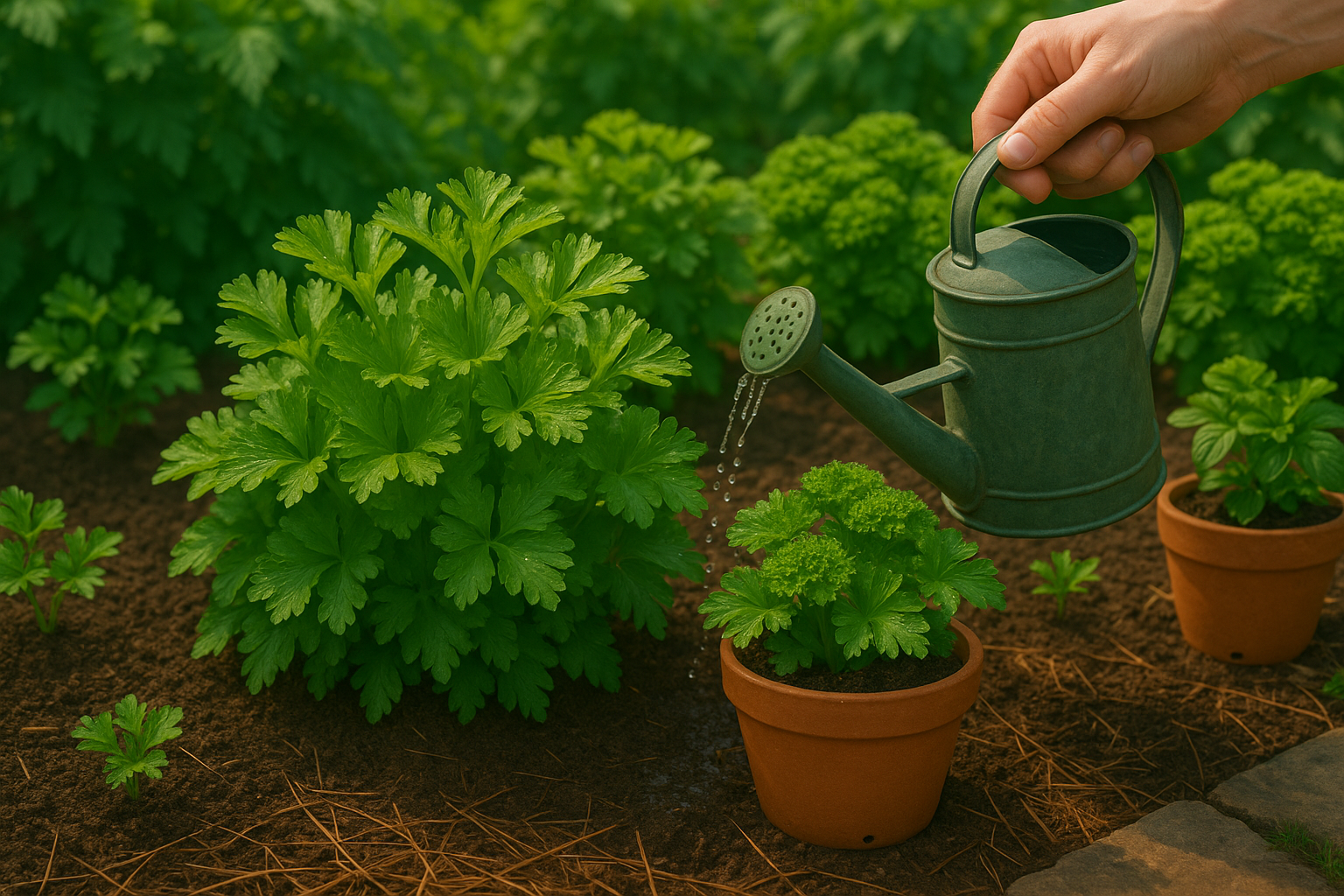How Often Should You Water Parsley?
Most parsley plants thrive when their soil stays consistently moist but not soggy. Aim to water your parsley every two to three days during hot weather, or whenever the top inch of soil feels dry to the touch.
If you’re growing parsley in containers, check the moisture more often since pots dry out faster than garden beds. Overwatering can lead to root rot, so make sure your pots have drainage holes and allow the soil to breathe between waterings.
Here’s a good tip: mulch around your parsley with straw or compost to help retain soil moisture and reduce how often you need to reach for the watering can.
Introduction to Parsley Watering Basics
If you’ve ever wondered how often to water parsley, you’re not alone. Parsley is a favorite herb among home gardeners and urban growers, prized for its fresh flavor and versatility in the kitchen. Whether you’re growing parsley in a backyard bed or a sunny windowsill pot, knowing when and how much to water is key to keeping your plants lush and productive.
Overwatering can lead to root rot, while underwatering may cause wilting and slow growth, so finding the right balance is essential. Throughout this article, we’ll explore how often you should water parsley, highlight telltale signs your plant needs attention, and share proven tips for keeping your parsley thriving wherever you grow it. Stick around to discover the simple watering habits that can make all the difference in your parsley’s health and harvest!
Factors That Influence Parsley Watering Needs
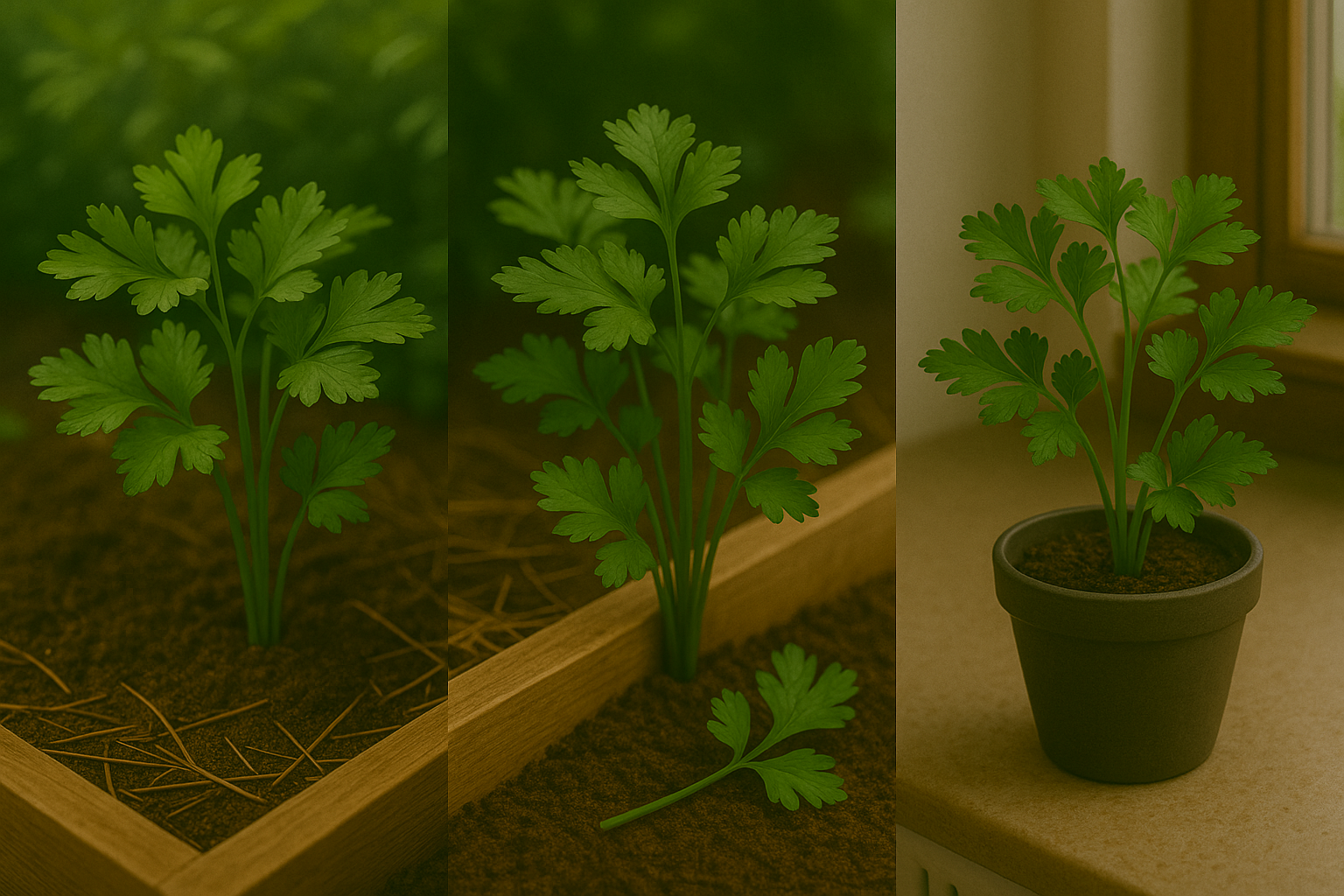
Parsley’s watering needs depend on several practical factors, starting with where and how it’s grown. Parsley in containers usually dries out faster than in the ground, requiring more frequent watering—sometimes daily during hot weather—while in-ground plants benefit from more stable moisture levels.
Indoor parsley is less exposed to wind and direct sun, so it may need less frequent watering than outdoor plants, but central heating can dry out the soil more quickly. Climate also plays a big role: gardeners in hot, dry areas will likely need to water parsley more often, especially during summer, whereas those in cooler, humid climates can water less.
Seasonal changes matter, too. Parsley grows fastest in spring and summer when it’s thirstiest, while slower growth in cooler months means the soil can stay moist longer. Soil type is another key factor: well-draining soils, like sandy or loam, prevent overwatering and root rot but dry out quickly, requiring regular checks; heavier, moisture-retentive soils hold water longer, reducing watering frequency but increasing the risk of sogginess.
To gauge your plant’s real needs, check if the top inch of soil is dry before watering and watch for limp, wilting, or yellowing leaves—signs of both underwatering and overwatering. Regular observation and adjusting to your own conditions will keep parsley healthy and thriving.
How Often to Water Parsley (General Guidelines)
When it comes to watering parsley, there’s no one-size-fits-all schedule—it really depends on where and how your plants are growing. For parsley seedlings, keep the soil consistently moist but not soggy; a light watering every two to three days usually works well. Always check the top inch of soil—if it feels dry, it’s time to water.
As parsley matures, the roots grow deeper, so aim for a deep watering about once or twice a week. Allow the top layer of soil to dry out a bit between waterings. For indoor pots, monitor moisture closely since containers dry out faster. Stick your finger into the soil and water thoroughly when it’s dry about an inch down.
Outdoor garden beds and raised planters retain moisture a little better but are still affected by wind and heat. During hot or windy spells, you may need to water more often. The goal is deep, consistent watering—enough for the water to reach the deeper roots rather than just moistening the surface.
Avoid quick, shallow watering, which encourages weak, shallow root systems and causes more frequent wilting. Always watch the weather and your parsley’s appearance: yellowing leaves or wilting signal underwatering, while mushy stems or moldy soil indicate you may be watering too much.
Ultimately, adjust your routine as needed, and remember that parsley prefers steady, moderate moisture rather than drought or soggy soil.
Signs of Overwatering and Underwatering Parsley
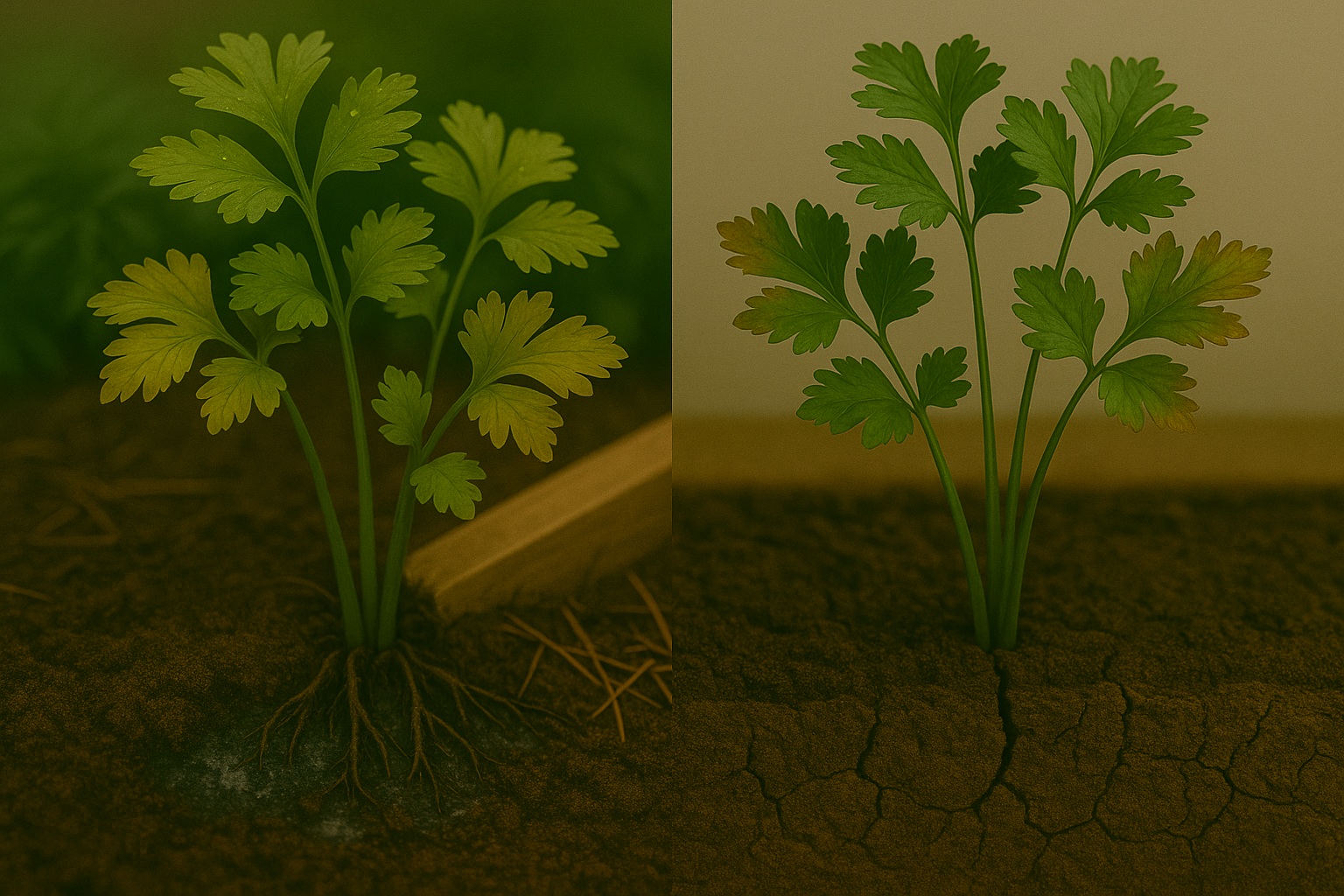
Parsley is a hardy herb, but it’s sensitive to its watering routine—too much or too little, and it will let you know. Overwatered parsley often shows yellowing leaves, a clear sign that the roots aren’t getting the oxygen they need. If you notice wilting despite the soil being wet, or detect a foul smell from the soil (a sign of root rot), it’s time to dial back on watering.
On the flip side, underwatered parsley displays drooping, dry, and crispy leaves, sometimes paired with stunted growth as the plant struggles to take up enough moisture.
The key to correcting these issues is quick action:
- For overwatering: Gently remove your parsley from overly soggy soil, trim off any slimy or dark roots, and replant in fresh, well-draining soil. Avoid watering again until the top inch of soil feels dry.
- For underwatering: Give the plant a thorough soaking, letting excess water drain away. Then maintain a consistent watering schedule by checking the top inch of soil and watering when it’s dry.
Regularly observe your parsley’s leaves and soil moisture—these simple habits help prevent both overwatering and underwatering, keeping your parsley lush and healthy.
Best Practices for Watering Parsley
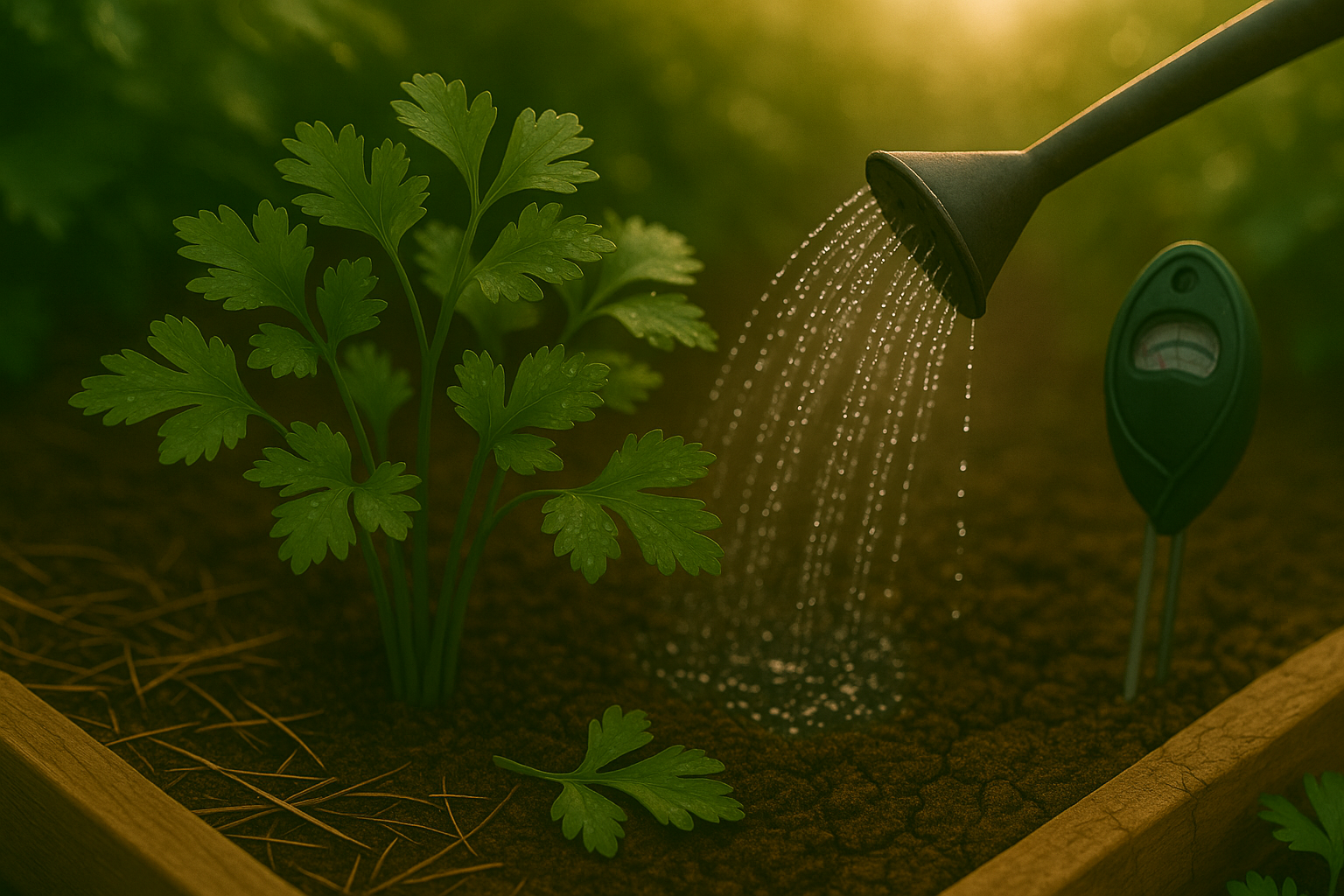
To keep your parsley healthy and thriving, water it early in the morning so the moisture can absorb before the midday sun causes rapid evaporation. Water the soil directly at the base of the plant instead of overhead; this helps prevent fungal diseases by keeping the leaves dry.
It’s crucial to plant parsley in well-draining soil and always use containers with adequate drainage holes to prevent root rot. Applying a thin layer of mulch around your parsley plants helps retain soil moisture and keeps weeds at bay.
To avoid overwatering, check soil moisture before watering again—just stick your finger about an inch into the soil; if it feels dry, it’s time to water. For an even more accurate reading, use a moisture meter, which quickly tells you if your parsley needs a drink.
By following these simple yet effective watering practices, your parsley will stay lush and productive all season long.
Seasonal and Growth Stage Adjustments
Plants have different water needs depending on their growth stage and the season, so it’s essential to adjust your watering routine accordingly. Seedlings and newly planted crops require consistently moist soil to establish roots, while mature plants often benefit from deeper, less frequent watering to encourage stronger root systems.
During hot, dry spells, check soil moisture daily and consider increasing your watering frequency to prevent stress—wilting leaves are a clear sign they need more moisture. In cooler months or rainy periods, cut back on watering to avoid waterlogging and root rot; let the natural rainfall do most of the work.
Always keep an eye on both the weather forecast and soil moisture—using a simple finger test or a moisture meter can help you know when your plants truly need water. This ongoing attention ensures your garden thrives through every season and growth stage.
Conclusion and Quick Troubleshooting Tips
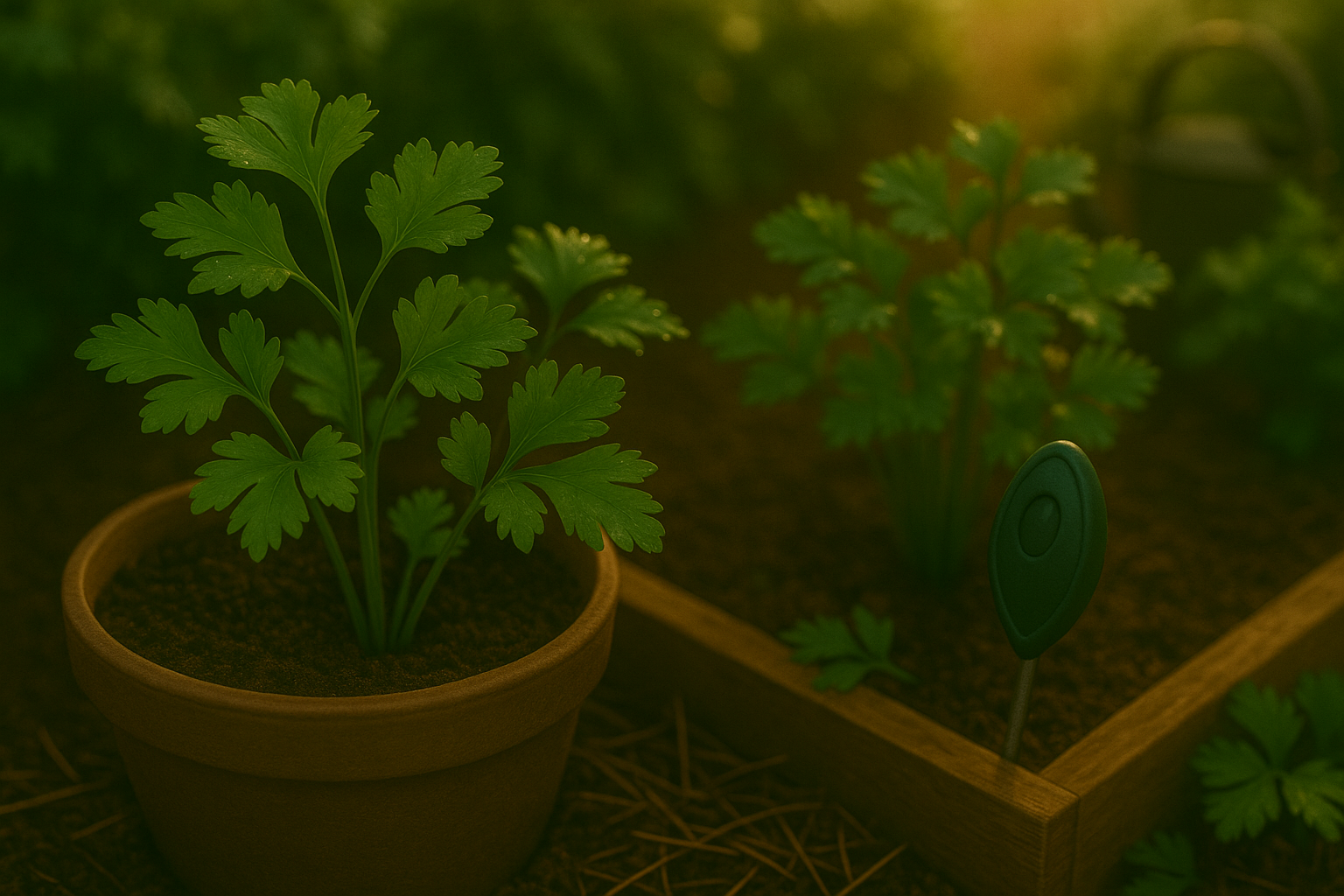
Proper watering is the key to lush, healthy parsley, so paying close attention to your plant’s needs makes all the difference. If the leaves turn yellow, check for overwatering or clogged drainage. Wilted or drooping leaves might signal underwatering—feel the soil before adding water.
For soggy soil, let your pot dry out and ensure it has proper drainage holes. Use mulch to retain moisture, but don’t let the soil stay soggy. Most importantly, observe your parsley regularly and adjust your watering routine as needed. With a little attention and these quick fixes, your parsley will flourish season to season.
